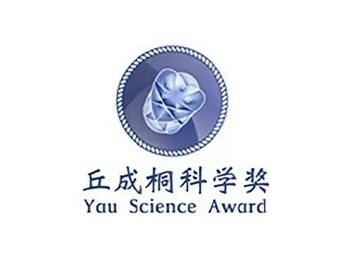26 Prestigious Competitions for High School Students
Participating in various competitions is a valuable experience from the perspective of applying to U.S. universities. If chosen wisely, these competitions can help you explore academic interests, showcase your academic strength and passion, and even give you a taste of the university environment. You can directly communicate with professors and outstanding students from around the world, and in some cases, earn college credits in advance!
Achieving excellent competition results can lead to receiving recommendation letters from professors or engaging in in-depth research, becoming a significant advantage in your application. However, despite the numerous benefits of competitions, it's crucial not to follow trends blindly. Choosing the most suitable competition can yield twice the results with half the effort!
The prestige of different competitions varies greatly. Some competitions can enhance your resume even without winning, while others may not be recognized by universities, even if you win a "national award."
What is a High-Prestige Competition?
1. Wide Recognition
For example, the International Olympiad Competitions at the top of the competition pyramid, where winners are often already targeted by top universities.
2. Strong Organizers
Some renowned competitions are hosted or sponsored by Fortune 500 companies, like Intel and Google. These companies invest heavily in the competitions, and the substantial scholarships attract countless top students.
3. High Difficulty
For instance, the Harvard-MIT Mathematics Tournament (HMMT) requires students to have AIME-level or even higher mathematical skills. Some competitions progressively select top performers for international finals, making them extremely competitive.
MIT List of Prestigious Competitions
Some universities have already outlined the "scope." Taking MIT as an example, here is the "MIT List of Prestigious Competitions." Guided by top universities, you can not only identify which competitions to participate in but also understand how to judge and select suitable competitions.

MIT's list mainly includes STEM competitions, which combine influence, high difficulty, and authoritative organizers. They are diverse and fully explore students' potential, making them highly suitable for students choosing STEM majors.
Among the 26 competitions, the International Olympiad Competitions occupy seven spots, highlighting MIT's emphasis on these contests. Additionally, the renowned ISEF and other research competitions are on the list. There are also innovative competitions, including robotics and maker contests, which involve software development and hardware construction, effectively testing students' professional skills and creativity in STEM fields.
Finally, MIT recommends four student-hosted competitions. Despite being student-led, contests like HMMT and the Think Competition have gained considerable international recognition.
What Are the Unique Features of These Competitions? How to Choose?
Prestigious Competitions for Ivy League Applications
1. International Olympiad in Informatics (IOI)

The IOI is an annual international competition in informatics. It uses Python, Pascal, C/C++, and Java as official languages, requiring participants to have strong self-learning, hands-on, and innovative abilities.
Participants compete individually, with each country sending only four members to form a national team. Over two days, team members engage in computer programming and algorithm problem-solving. Being selected for the IOI national team means you are already among the top 10 in the country. Therefore, its selection process—USACO (equivalent to NOIP in China)—also holds significant prestige. (USACO does not restrict nationality.)
2. International Linguistics Olympiad (IOL)

Established in 2003, the IOL is one of the 13 Olympiad competitions for high school students. As a competition with minimal academic background requirements, the IOL mainly assesses participants' thinking, teamwork, and problem-solving abilities. Thus, participants can join without deep linguistic knowledge.
Although the IOL only entered China in 2012, it has gained considerable recognition domestically due to its low entry barrier, high award value, and short preparation time.
3. International Olympiad on Astronomy and Astrophysics (IOAA)

The IOAA is a gathering of high school astronomy enthusiasts from around the world. It was initiated by six countries: Thailand, Indonesia, Iran, China, Poland, and Brazil, aiming to promote astronomy among high school students.
The competition includes four types of exams: theoretical (50% of total score), data analysis (25%), observational (25%), and team competition. The IOAA assesses theoretical, analytical, and practical skills, offering a rich variety of formats.
According to past rules, participants scoring higher than 90% of competitors in individual events can receive gold medals. Those excelling in specific exams may also receive awards. However, as the competition's reputation grows, organizers are considering raising the award thresholds.
Prestigious Research Competitions for High School Students
Compared to Olympiad competitions, these research-based competitions are more diverse and innovative. Backed by prestigious universities and companies, they often offer substantial rewards to winners.
1. Regeneron International Science and Engineering Fair (ISEF)

ISEF is the largest and most prestigious science competition for grades 9-12 globally. Known as the "Science World Cup," it attracts over 3 million students annually, with winners sought after by top universities like Harvard and Stanford.
The competition is team-based, with 1-3 members per team, competing in fields such as mathematics, physics, chemistry, biology, and computer science. The subjects cover all natural sciences and some social sciences.
Due to its scale, participants must first compete in regional qualifiers. In the U.S., state-level qualifiers allow only about 2% of students to advance to the international level.
2. Regeneron Science Talent Search (STS)

Formerly the Intel Science Talent Search, the STS is a "hallmark" high school research competition. In 2017, Regeneron took over the naming rights from Intel, and the competition was renamed.
Compared to ISEF, the STS is smaller in scale and more challenging. Each year, about 2,000 students participate, with only 40 finalists showcasing their research and interacting with renowned scientists and government leaders.
As a result, the STS is highly recognized among universities. High school students excelling in this competition are not only prime candidates for Ivy League schools but may also become future Nobel laureates.
Registration typically occurs in November, and 12th-grade students from U.S. high schools and overseas U.S. citizens can apply. The 2025 STS application is now open! Check out The Complete Guide to 2025 Regeneron STS.
Prestigious Robotics and Maker Competitions
FIRST Robotics Competition (FRC)

Organized by the U.S. nonprofit FIRST, this competition is open to all middle and high school students. Over 100 universities worldwide recognize and participate in FRC.
FRC successfully blends robotics and sports, themes that resonate with young people. Due to the competition's structure, there is both cooperation and competition among teams. Participating in FRC can spark students' interest in engineering and computer science, while fostering leadership skills through collaboration and competition.
Instructables Competition

Originating in 2005 and hosted by the Instructables website, this is an online skills competition. Users can upload their projects, and others can rate them. The competition offers various interesting videos and guides, inspiring students to create based on these instructions.
This competition can provide substantial inspiration for your college application portfolio or artistic creations.
How to Stand Out in High-Prestige Competitions?
1. Solid Academic Foundation Is Crucial
Most internationally renowned competitions either have high entry barriers, requiring students to submit academic records or project abstracts during registration, or they conduct regional and national preliminaries to select the best candidates. Whether it's the lengthy competition process or academic performance, students need strong foundational knowledge.
2. Prepare Thoroughly Before the Competition
Some students procrastinate, only preparing or registering at the last minute. However, for high-difficulty competitions, "going in unprepared" is inadvisable! For example, competitions like HMMT and AMC update their question banks annually, and some release topics in advance. Without systematic practice and preparation, it's challenging to adapt quickly to the competition's pace, unless you have exceptional talent.
3. Choose a Good Topic for Research Competitions
Many competitions require students to choose topics within specific disciplines. This tests participants' research skills and topic selection abilities. For instance, the 2019 ISEF winner Krithik Ramesh's research topic was "Improving Spinal Surgery Using Machine Learning and Computer Vision." Cynthia Chen, a 2019 Davidson Fellow, researched "Facilitating Cancer Targeted Drug Antibody Synthesis Through Neural Network Autonomous Learning." Another winner, Varun Kumar, worked on "Dihydrotanshinone: A Comprehensive Treatment for Cancer Chemoresistance."
Upcoming high-prestige competitions for high school students include The Conrad Challenge, National History Day, and The Global Youth Research and Innovation Conference.
If you want to start a competition but don't know where to begin, consider Embark.
Embark Research Education was established in 2016 as the first institution focusing on customized scientific research training for teenagers. All core team members are graduates with master's or doctoral degrees from prestigious U.S. universities. Since its establishment, Embark has signed exclusive contracts with over 3,000 mentors from Ivy League schools, MIT, Caltech, Johns Hopkins University (JHU), Carnegie Mellon University (CMU), top 30 U.S. universities, national key laboratories, the G5 in the UK, Max Planck Institutes in Germany, ETH Zurich in Switzerland, National University of Singapore, Nanyang Technological University, and other world-renowned universities. By guiding students through customized research training, Embark has helped them win nearly a thousand awards in major global scientific competitions, facilitating their successful admission to prestigious universities such as Harvard, Stanford, Princeton, Oxford, and Cambridge.
If you have any questions or want to learn more, please contact us. We are happy to assist you and explore possible collaboration opportunities.



